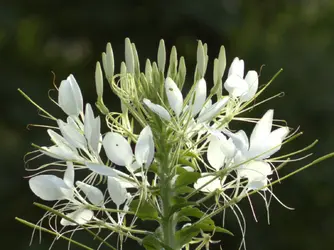Yi-M1 "HDR"
- 42.5mm F1.8 Macro/Portrait lens
This project started when I decided to post some pictures of my Sony a5000 using my Minolta 28-100 zoom. I expected to take a couple of quick "snap-shots" and post them. But when I saw the results I was disappointed and ended up working on the DNG files until I got fairly acceptable results.
[see: ""Konica Minolta 28-100mm f/3.5-5.6 D AF Zoom" #9"
Konica Minolta 28-100mm f/3.5-5.6 D AF Zoom]
After I was done, it remained on my mind and I had a couple of approaches for improvement. The first was a simple change in the exposure to EV = +1.0. The second was to finally try out the HDR capability of the Yi-M1. Later in the evening I decided that it was a good idea for me to take the extra time and try out the HDR capability of the camera, so the decision was made to continue this as a new project.
One reason I have not gotten around to trying the HDR mode on the Yi-M1 was because the camera does not save a RAW (DNG) file when it is used this way. I guess that this is probably because it is doing so much and taking its time just making the HDR. If there were an option to save a RAW, what kind of file would it be? I would be happy it the camera saved the RAW image indicated by the EXIF data.
About HDR:
NOTE: This forum has a specific area to discuss HDR which I have not had time to look into yet.
As far as I know, "HDR" and "WDR" mean the same thing. Both terms were coined by people trying to cope with the problem of making pictures where the dynamic range of the subject matter exceeded the inherent reciprocity of the hardware. The techniques go back to the concepts like "dodging and burning" and other techniques developed in film photography to cope with the same problem. Some companies might be trying to define certain techniques as one or the other, but I have seen the terms used interchangeably, and I have not seen anyone state a specific difference. If anyone knows, or even "thinks" otherwise, let me know.
This Image Set:
I used a slightly different but similar setup as yesterday, but the lighting is a bit less diffused this time. For this set of images I also decided to control the depth of field by using "Aperture Priority" and working with F8 and F11, and in the latter pictures selecting the point of focus with the touch screen.
I am not planning on posting "detail" crops for this set.
"PC210003a-rsz1640-C1.JPG"
I started this project with three images taken "regularly" with EV = +1.0 and DNG files. This is the last image with DNG. All the rest are HDRs. This is my "control" image. If I had taken yesterday's pictures with EV = +1.0 then I would have probably still worked with some of the DNG files, but I would have had an easier time, and probably better results. I probably would have posted this picture as-is. There is sufficient shadow detail to show the equipment using the adapter's tripod mount and how high it raises the camera. I was not trying to make it look "pretty", I was only trying to show the equipment I had been using lately.
Partial EXIF
Dimensions 5184 x 3888
Color representation Uncalibrated (AdobeRGB)
F-stop f/8
Exposure time 1/100 sec.
ISO speed ISO-3200
Exposure bias +1 step
Focal length 43 mm
Max aperture 3.65
Metering mode Center Weighted Average
35mm focal length 86
Exposure program Aperture Priority (forced F8)
"PC210005a-rsz1640-C1.JPG"
This file replicated most of the settings of "03" except that it is set for HDR and no RAW. Notice how that exposure time jumps from 1/100 sec. to 1/5 sec. and the ISO drops from ISO-3200 down to ISO-200. I did not do that, the HDR setting did that. Also, the picture is slightly zoomed/cropped compared to the control picture. If size is critical, one might have to anticipate, and maybe even calculate this difference. Also, the exposure is still EV = +1.0. In picture "11" below, using EV = +0, shadow detail starts to go away. So correct exposure is still a "judgement call" and bracketing is a good idea. I consider this image to be "almost perfect". The highlights have been muted bringing out the "AF 28-100" label and the exposure of the bright area on the lens mount is also reduced. Part of the camera body and parts of the tripod mount are sitting a bit too close to the "floor black" than I would like, but there is no detail of interest in those areas anyway. Likewise, at the front of the lens there is some silver area which is just inside the "white" value.
Partial EXIF
Dimensions 5184 x 3888
Color representation Uncalibrated (AdobeRGB)
F-stop f/8
Exposure time 1/5 sec.
ISO speed ISO-200
Exposure bias +1 step
Focal length 43 mm
Max aperture 3.65
Metering mode Center Weighted Average
35mm focal length 86
Exposure program Aperture Priority (forced F8)
"PC210007a-rsz1640-C1.JPG"
This file has slight composition changes (the angle of view) and F11 is used to increase the depth of field. The focus distance has been adjusted by using the touch screen focus in order to best use the depth of field. I tried a few focus points and this one turned out the best. I do not think there is a good way to check depth of field on this camera.
Partial EXIF
Dimensions 5184 x 3888
Color representation Uncalibrated (AdobeRGB)
F-stop f/11
Exposure time 1/2 sec.
ISO speed ISO-200
Exposure bias +1 step
Focal length 43 mm
Max aperture 3.65
Metering mode Center Weighted Average
35mm focal length 86
Exposure program Aperture Priority (forced F11)
"PC210011a-rsz1640-C1.JPG"
This file has another composition changes (angle of view) and it tests setting the Exposure Bias = +0.0. The average brightness of the image is darker, but the highlights and "floor black" still seem to be "contained." Comparing the two, I think it is best to adjust the exposure compensation as if it was a normally exposured picture. The lettering at the front of the lens is falling out of the depth of field, but I think if I had focussed a bit more towards the front of the camera I could have covered it without the "Sony" label losing sharpness.
Partial EXIF
Dimensions 5184 x 3888
Color representation Uncalibrated (AdobeRGB)
F-stop f/11
Exposure time 1/5 sec.
ISO speed ISO-200
Exposure bias +0 step
Focal length 43 mm
Max aperture 3.65
Metering mode Center Weighted Average
35mm focal length 86
Exposure program Aperture Priority (forced F11)
Conclusion:
The HDR setting can be useful, but yes, it takes a bit of practice to get the most out of it. It still helps to set the exposure compensation appropriately.
NOTE: Due to upload problems the rest of the files were uploaded 2017-12-22 09:31.
































![[No title]](/data/xfmg/thumbnail/36/36669-32e6602a9741e9fefddbc9dc04bc8e8f.jpg?1734169173)
